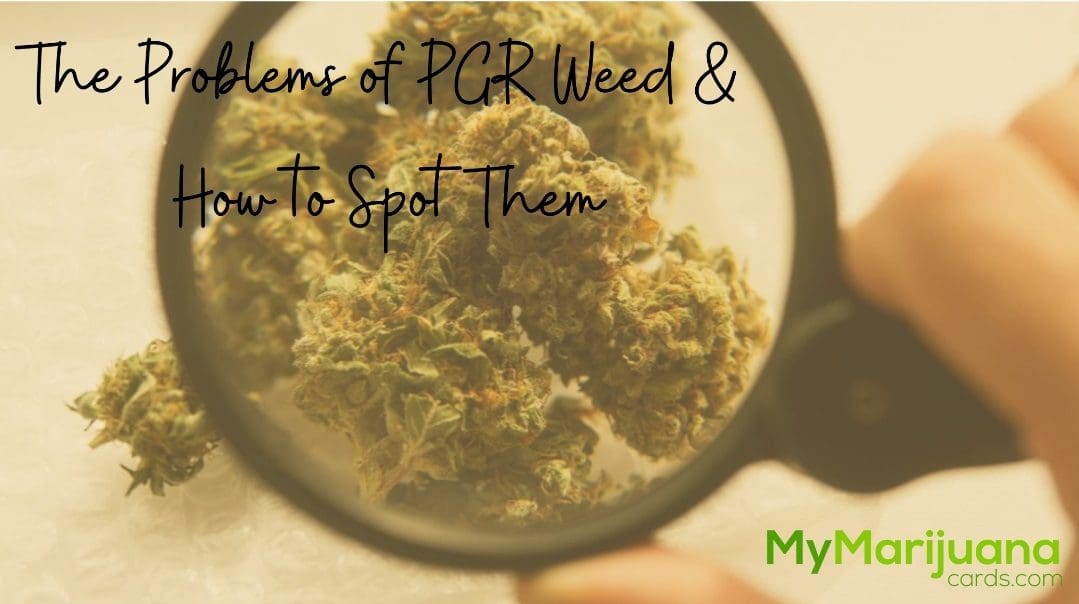As the controversy over GMO foods rages, should we also worry about GMO weed? Plant growth regulators are used to chemically change cannabis without GMOs. PGR cannabis is a means for producers to increase earnings at your cost. PGRs are compounds used to regulate plant growth. Growers use this to maximize fruit size, manage flowering, and control root and stem growth.
Tothese plant growth regulators’ weed is poisonous and shouldn’t be eaten or smoked. PGR cannabis lacks cannabinoids, terpenes, and trichomes. Sometimes it doesn’t produce THC. Given that THC and cannabinoids constitute cannabis’s recreational and medicinal attraction, you can pay money or smoke something with health concerns.
What is PGR Weed?
PGR marijuana is cultivated using plant growth regulators. Chemicals influence plant growth to boost production or impact. They create bigger, denser cannabis flowers or nugs. Why not? These substances change plants and impede THC production. They expand cannabis’ size and weight while removing its beneficial cannabinoids, terpenes, and trichomes.
You’re wasting money on cannabis that won’t get you high and putting your health in danger by burning and eating toxic compounds. Many of these PGRs are only permitted for aesthetic plants, not food crops. What’s their purpose? Some black-market cultivators employ PGRs to boost the potency of illegally sold cannabis. In regions where cannabis is illegal, individuals sell PGR-grown street marijuana.
What Are Plant Growth Regulators?
Plant growth regulators may govern dormancy, fruit development, shoot length and size, and more. These PGRs produce attractive plants. Growers utilize PGRs to boost weed’s health and mold resistance. With synthetic cultivars, gardeners trade taste and beauty for quantity, not quality or safety. Growth regulators aren’t evil. The market’s PGR cannabis is unhealthy because of the PGRs utilized.
Organic PGR vs. Synthetic PGR
We’ll cover synthetic PGRs below, so we’ll concentrate on organic/natural ones utilized in agriculture and food production. Toxic plant growth regulators have healthy alternatives. Kelp’s inherent plant hormones may boost output. Chitosan, a sugar in shellfish exoskeletons, and alfalfa hay triacontanol are natural plant growth regulators. Advantages include:
- Similar to synthetic versions: cannabis plants grow faster and have thicker buds.
- No health hazards.
- Infiltration into soil or streams doesn’t harm biodiversity.
Common organic PGR weed growth regulators include:
- Kelp
- Chitosan
- Triacontanol
Synthetic plant hormones generate unflavored, dangerous, and nearly worthless buds since they lack the THC we crave. Organic PGRs are less effective for black market farmers and merchants. They cost more and don’t produce profit-boosting huge, plump, dense, colorful buds.
How to Identify PGR Weed
While dishonest criminals utilize PGR cannabis to boost their earnings, you can recognize it to safeguard your health.
PGR weed may be identified by:
1. Red or Brown Excessive Hairs
Cannabis has hairy pistils. PGR marijuana has brown and red hair-like strands. They generate more hairs than trichomes or THC crystals.
2. No Crystals
Cannabis has hairy pistils. PGR marijuana has brown and red hair-like strands. They generate more hairs than trichomes or THC crystals.
3. No Smell
Terpene development may be disrupted. PGR marijuana lacks the telltale cannabis scent. Terpenes and cannabinoids give the bud its bouquet of fragrances. PGR cannabis doesn’t smell when broken off.
4. Dense, Heavy, & Rock-Hard Buds
PGRs force a lot of growth into the flowers. This probably means that they are often denser and heavier. Unfortunately, it’s possible to lead to a rock-hard texture that feels weird to the touch.
5. Wet, Spongy Texture
Wet or spongy cannabis might indicate PGR usage.
6. Chemical taste
If your smoke or edible cannabis tastes chemical, it’s PGR. This may cause a transient, fatigue-inducing chemical high.
PGR cannabis lacks aromatic flavonoids and terpenes and has a “buffed,” hard, frequently multicolored appearance. If your bud appears lifeless and unpleasant but smells and feels good, it’s preferable to opt for the less dramatic-looking variation than the aesthetic one since the latter is likely to burn your wallet and make you ill.
Apply For Your Medical Marijuana Card Online Today!
Obtain a Med Card in your State
AlabamaAlaskaArizonaArkansasCaliforniaColoradoConnecticutDelawareFloridaGeorgiaHawaiiIllinoisKentuckyLouisianaMaineMarylandMassachusettsMichiganMinnesotaMississippiMissouriMontanaNevadaNew HampshireNew JerseyNew MexcioNew YorkNorth CarolinaNorth DakotaOhioOklahomaOregonPennsylvaniaSouth CarolinaSouth DakotaTexasUtahVermontVirginiaWashington DCWashington StateWest Virginia
What Are the Most Common Synthetic Hormones to Create PGR Weed?
Chlormequat chloride, daminozide (Alar), and Paclobutrazol are popular cannabis PGRs. All three impede growth, making the flower the plant’s biggest and densest portion.
All three harm the body.
1. Chlormequat Chloride
Chlormequat Chloride slows plant development to promote bigger buds. Large quantities of this plant growth regulator may cause skin, eye, and organ irritation.
2. Daminozide
Daminozide, or Alar, decreases leaf and stem development and enlarges buds. It also reduces terpenes and cannabinoids. No CBD or THC. EPA has prohibited daminozide in food as a potential carcinogen. It was formerly employed as a food crop spray. If it’s not edible, don’t smoke it!
3. Paclobutrazol
Paclobutrazol inhibits plant cell elongation, increasing flower and bud density. Paclobutrazol reduces cannabis’ THC production. Most toxic of the three. Smoking PGR cannabis cultivated with paclobutrazol may produce carcinogenic nitrosamines. According to studies, Paclobutrazol affects male weed plant fertility and causes liver damage.
How Do Growers Apply Synthetic Hormones to Make PGR Weed?
Growing PGR is easy. Responsible producers consider plant requirements, but less responsible ones do this:
- Spray plants.
- Drenching – They blend PGRs with water and irrigate plant soil, so roots absorb them.
- “Spreeding” – A solution of PGRs and water is sprayed over plant leaves and growth medium.
What Health Risks Can You Face When Using PGR Weed?
PGR marijuana may cause poor energy, tiredness, and severe headaches. Long-term, these pollutants may cause liver and kidney damage, neurotoxicity (abnormal nervous system activity), reproductive issues, cancer risks, skin and eye damage, and more.
Is PGR Weed Legal and How Common Is It in the United States?
Due to a lack of national unified cannabis policies and legislation, synthetic PGR marijuana is popular. Synthetic PGRs are harmful for human consumption and forbidden in agriculture and food crops. They’re still used as plant nutrients. Black market marijuana growers still utilize them.
How Do People Know a Cannabis Product Contains PGR Weed?
PGR cannabis may be identified by its appearance, texture, and fragrance (or lack thereof). PGR vapes and consumables have a chemical-laced flavor and odor. After consuming a product, some people feel heavy-headed, dizzy, or ill.
Because of its carcinogenic and reproductive concerns, you should avoid PGR pot and ingest it from approved farmers and licensed outlets with your medical marijuana certificate.
Avoid PGR Weed, Choose MMJ if Possible!
Shady individuals jeopardize people’s health to profit from cannabis mania. Some individuals employ banned plant growth regulators from cultivating weeds and padding their wallets. PGR marijuana may have thicker, heavier buds, but it’s also poor in THC and other cannabinoids that give cannabis its value. If something is harmful when eaten, it’s probably worse when smoked.
If medicinal marijuana is permitted in your state, shop at a dispensary to avoid PGR cannabis. Get a medical marijuana card online now with My Marijuana Cards!
My Marijuana Cards can help you navigate through understanding what you need. Contact via email here or via phone at 1(877)783-1805.
 5 Star Google Verified Reviews (1,190+)
5 Star Google Verified Reviews (1,190+)





